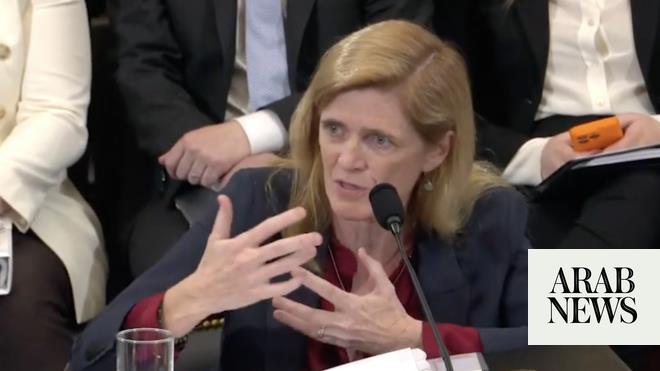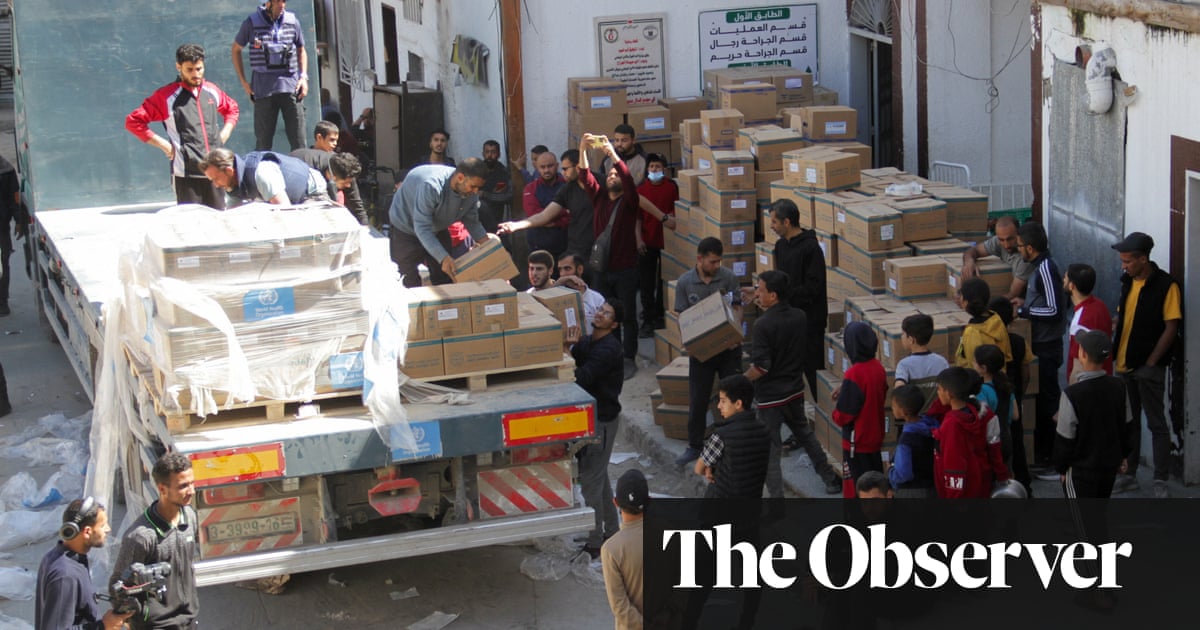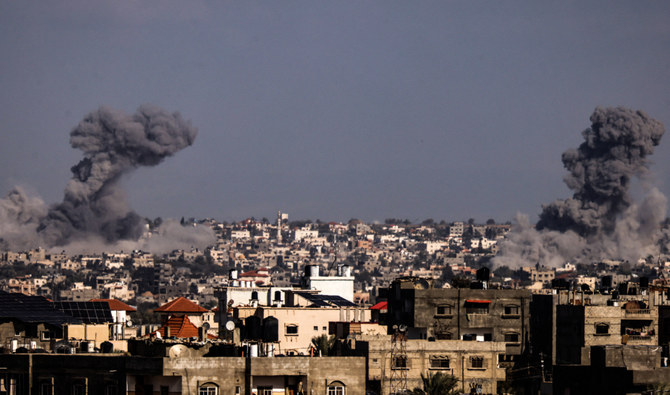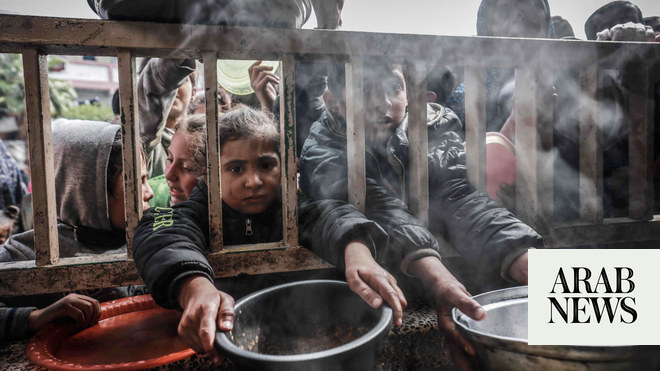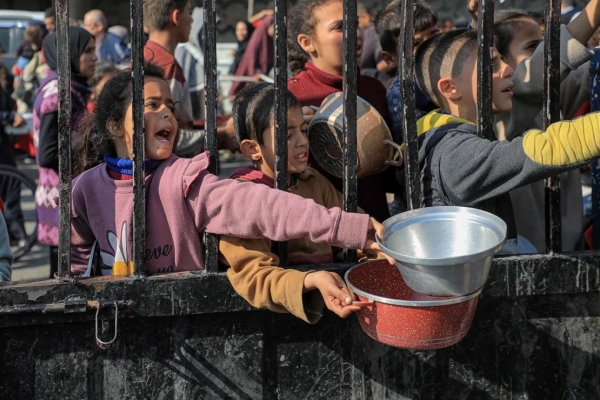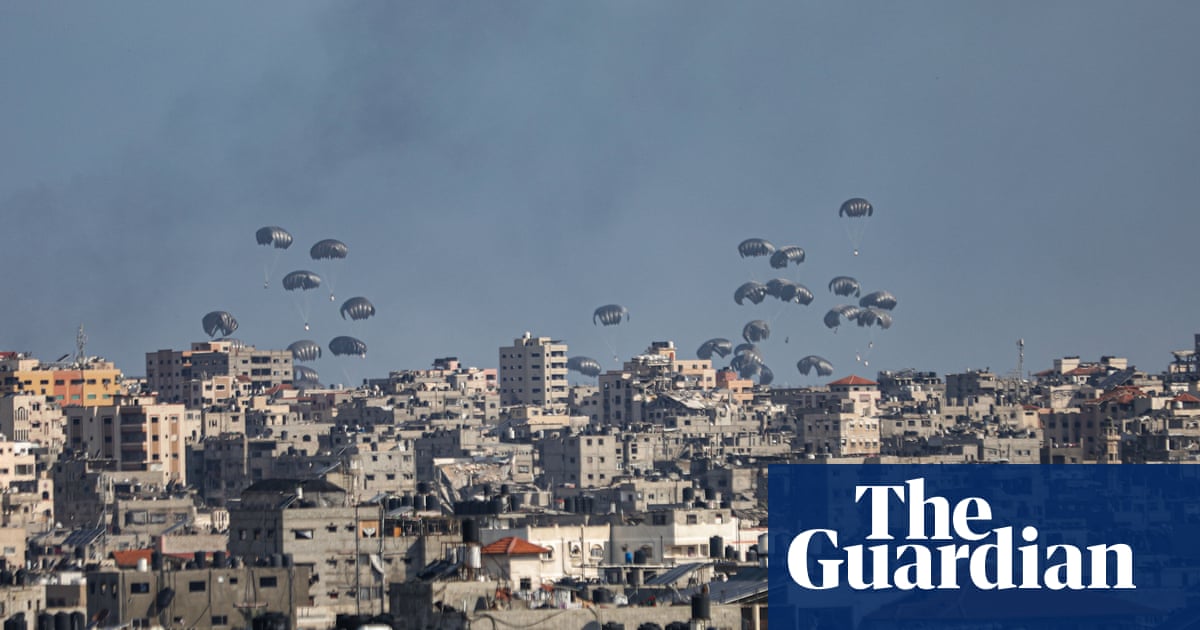
A promised surge in aid into Gaza that Benjamin Netanyahu promised Joe Biden a week ago has so far failed to materialise, aid workers say, as the US aid chief confirmed that famine is beginning to take hold in parts of the besieged coastal strip.
The increase in the number of truck crossing into Gaza claimed by Israel conflicts with UN records and already appears to be faltering.
“There is a lot less than meets the eye so far,” said Jeremy Konyndyk, a former senior official in the Biden administration, who is now president of the Refugees International aid advocacy organisation. “Very little has actually changed.”
One of Netanyahu’s pledges to Biden, to open the Ashdod port north of Gaza as a portal to sea-borne humanitarian aid, has led to no apparent action, according to the Israel N12 channel. N12 reported that none of the Israel Defense Forces (IDF), Israel’s Coordinator of Government Activities in the Territories (Cogat) nor the Ashdod Port authorities have so far received instructions about opening the facility to shipments bound for Gaza.
Israeli officials had been promising their US counterparts for weeks that a crossing point would be opened into northern Gaza where the starvation is the most severe. It would either be at Erez, which was the main border point before the current war, or at a new site, they informed Washington. No decision was made, however, until Wednesday, six days after the Biden-Netanyahu call, when the defence minister, Yoav Gallant, said construction had begun on a new crossing. It is not clear how long that construction work will take.
Two other steps Israel was supposed to take to increase the flow of assistance are also under way, with no target completion date. One is a coordination centre where aid agency officials and Israeli operational commanders are supposed to sit together to make sure that aid missions are not bombed like the World Central Kitchen (WCK) convoy on 1 April, when seven of its aid workers were killed.
The other is a new security screening centre where trucks of humanitarian assistance heading for northern Gaza can be inspected by Israeli monitors before crossing over.
Aid officials say the amount of food getting into the coastal strip is far short of what is needed to fend off an impending famine, particularly in the north. On Wednesday, Samantha Power, the head of the US humanitarian and development agency, USAID, became the first American official to confirm publicly that famine had already got a grip in at least some parts of Gaza.
Power told a congressional committee that her officials had analysed an assessment by food insecurity experts in mid-March that a famine could set in between later the same month and mid-May, and had found that judgment to be “credible”.
“So famine is already occurring there?” Democratic congressman, Joaquin Castro, asked her.
“That is – yes,” she replied.
The independent assessment, known as the Integrated Food Security Phase Classification (IPC), used three main criteria: the number of households facing extreme lack of food, the number of children suffering from acute malnutrition, and the number of adult deaths due to starvation or the combination of disease and starvation. The IPC report in March found two of the three benchmarks had already been reached or exceeded.
In her comments, Power said the third threshold was difficult to access, and more data was needed, but USAID expected it to be reached imminently.
Israel has claimed that the daily passage of trucks entering Gaza has doubled since the Biden-Netanyahu call on 4 April, to about 400.
The UN relief agency, Unrwa, said however that after a brief peak of 246 on Tuesday, the numbers of trucks crossing into Gaza had fallen by Wednesday to 141.
One reason for the discrepancy could be that the Israeli count could include private and NGO deliveries. Furthermore Israel counts trucks crossing into the border area. The UN tallies them as they leave that area into the rest of Gaza.
Cogat published a picture on X on Thursday, which it said showed the cargoes of 600 aid trucks waiting to be collected on the Gaza side of Kerem Shalom.
“Do your job,” the tweet said. “The bottlenecks are not on the Israeli side.”
Under a delivery system that predates the current conflict, goods from outside Gaza are screened, then delivered to its entry points, unloaded on the Gazan side of the crossings and then reloaded on to different trucks operating inside the strip.
US officials say that one of the main bottlenecks preventing the distribution of food is the lack of trucks and drivers operating inside Gaza.
However, truck owners involved in the food deliveries, mostly Egyptian hauliers, are reluctant to let their vehicles be used inside Gaza for fear of them bombed or ransacked by starving Gazans. There is also a shortage of willing drivers after repeated incidents of aid trucks coming under fire, of which the WCK bombing has been the worst but far from an isolated incident.
The planned coordination centre, whenever it is finished, may not be sufficient to address this fundamental obstacle to delivering food, as long as much of Gaza is a free fire zone, aid workers argue.
“What needs to be fixed is guaranteeing and enabling aid operations a safe presence in all the parts of Gaza that needed it, starting with the north,” Konyndyk said. “And that has not changed one iota.
“I think what the World Central Kitchen strike makes really clear is that the problem is not simply a deconfliction failure. The rules of engagement on the frontlines and the battle practices that the IDF is applying make reliable deconfliction almost impossible.”




